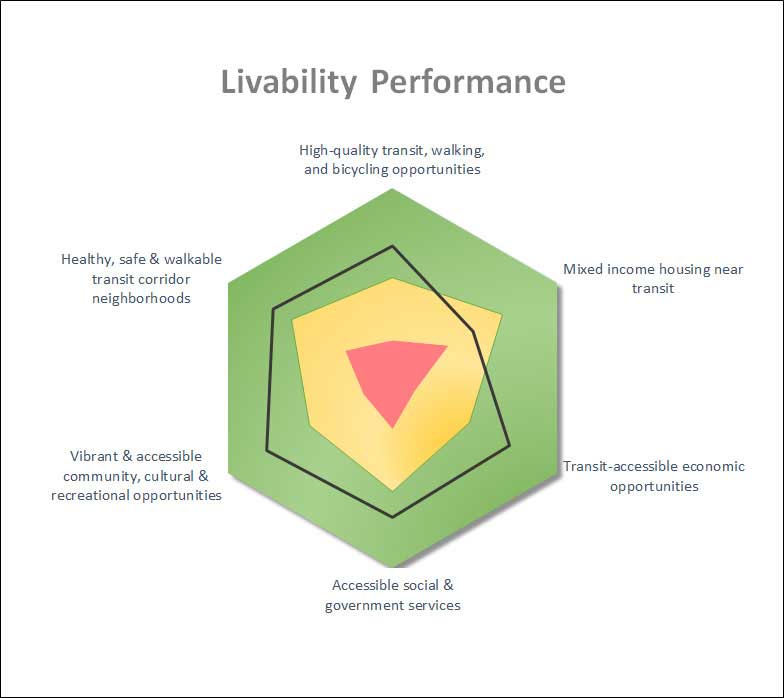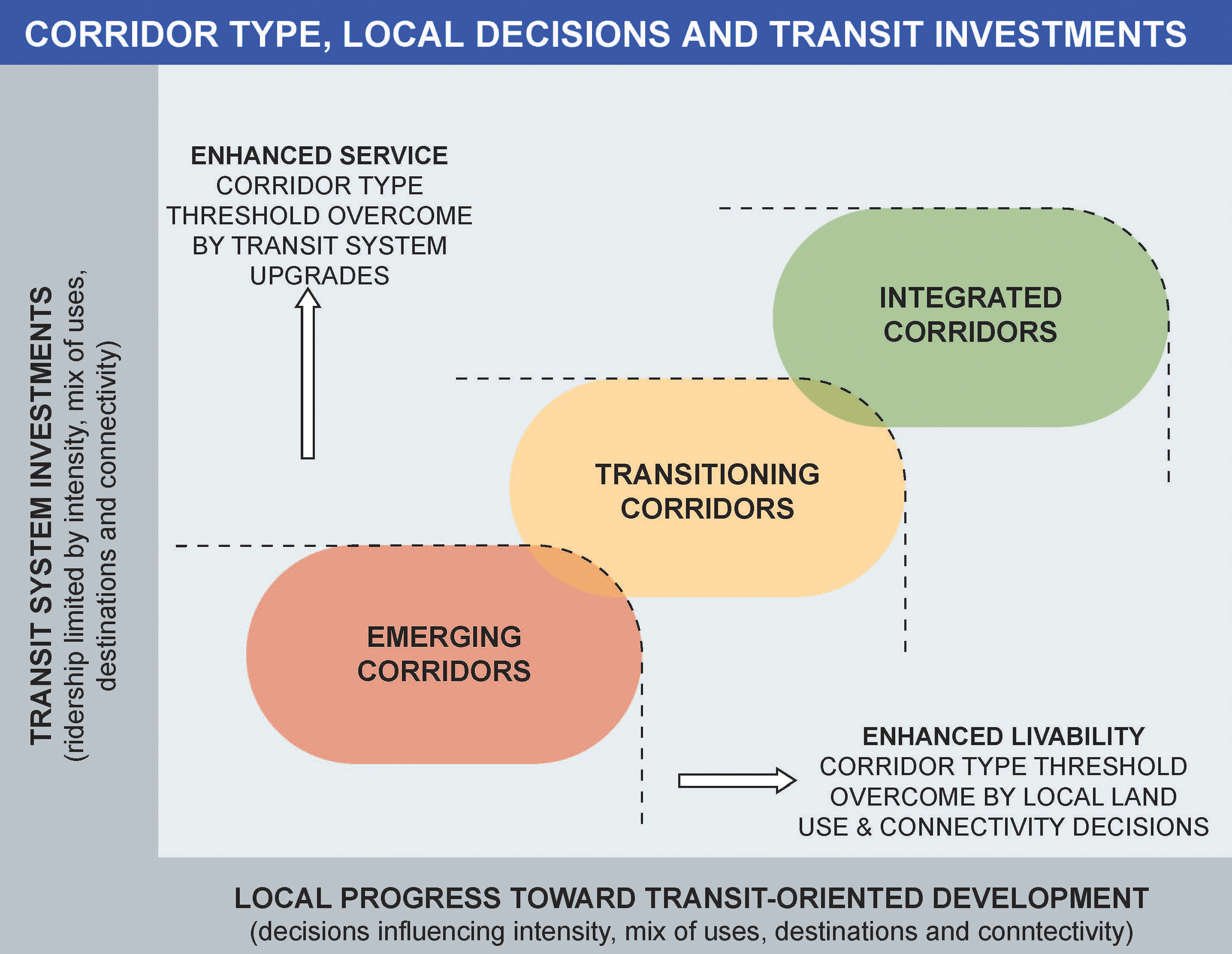Using Our Typology to Understand Your Corridor
Livability measures help assess corridor strengths and needs. Typologies provide another planning tool that recognize commonly associated characteristics. Our Livable Transit Corridor typology helps identify issues common among corridors surveyed. Once you understand key characteristics, our method takes your stakeholders through a step-by-step process to identify the most effective strategies for your corridor from a menu of best-practices from around the country.
Our typology classifies transit corridors into three major types associated with: transit function, urban versus suburban settings, and land-use mix and intensity.
- Emerging Corridors serve low-intensity, use-segregated communities with limited transit service. Lower livability performance is attributable to infrequent transit service, relatively few transit- and pedestrian-accessible destinations, and transportation and land use patterns oriented toward auto use.
- Transitioning Corridors possess many livability dimensions but still lack characteristics needed to attain a high state of livability.
- Integrated Corridors have transit-oriented development (TOD) conditions with destinations that are dense, and a diverse and compatible set of livability opportunities. Integrated corridors represent a mature set of conditions toward which other corridors can progress, and are capable of becoming even more livable.

Performance of a sample corridor (in black) is compared with an average range for each corridor type – with average Emerging Corridor performance in red, Transitioning in yellow, and Integrated in green.

With planning, programs, and investments, a corridor’s performance can progress from Emerging, through Transitioning, to Integrated. Coordination and cooperation are vital for implementation. Progress can be made when reciprocal commitments are made by transit agencies (responsible for infrastructure and transit service) and local government (responsible for land intensity, ridership levels, and availability of destinations).
